|
From providing drinking water to leaving grass to grow: here are eight easy ways to help wildlife this summer. Many of us are aware that wildlife needs extra help to survive during the cold winter months – but lots of creatures also need a helping hand when the weather's hot and sunny. So how can we help wildlife in summer? Here are 8 easy actions! #1 Give birds a drink If you only do one thing, providing water for the wildlife in your garden should be it. In a hot summer, water is as essential for birds as it is for us. During prolonged periods of dry weather, fresh drinking water is harder for birds to find, as natural sources such as streams and ponds may dry up. Bathing is important for birds too, to remove dirt and grit and keep their feathers in tip-top condition. If you don't have a pond (more about ponds in a minute), the birds in your garden will really appreciate a birdbath. Most purpose-built birdbaths are designed with a shallow basin that gradually deepens – this will attract a variety of birds, as different birds like different depths of water to bathe in. It doesn't have to be a fancy birdbath, though – any shallow dish or container will do the same job. Try putting water out in a plant pot saucer or even an old frying pan! If the container has very smooth sides, smaller birds may not be able to grip onto it and may fall into the deeper water – putting some gravel or small pebbles in the container will help prevent this. #2 Top up garden ponds If you have a garden pond, then you're already providing a great source of drinking and bathing water for birds – as well as for small mammals. Ponds also offer a habitat for many invertebrates, such as dragonflies and damselflies. Be sure to check the water level in your pond regularly, as shallow ponds in sunny positions can dry up, leaving pond creatures stranded. If you have access to rainwater from a water butt it's best to use this to top up the pond, as this maintains the correct ecological conditions. But tap water is better than nothing if that's all you have – just top up little and often to avoid altering the water quality too much. If your pond is deep, make sure there's a gently sloping access and exit point for small animals – a few strategically placed stones can help. Although hedgehogs can swim a little, they may drown if they become trapped in a steep-sided pond or trough. #3 Make a bee bowl It's not just birds that need a drink. Bees need water too. Many natural sources are too deep or fast-flowing for bees, and they can they drown in water bowls and birdbaths. So why not make a bee bowl? Find or buy a shallow container – a terracotta saucer from the garden centre works well – and fill it with small pebbles or marbles. Then fill with water, making sure that plenty of pebbles stand out of the water, to give the bees something to land on. You'll need to top up birdbaths and bee bowls every day with fresh water – and birdbaths may need cleaning with hot soapy water if droppings accumulate. #4 Grow nectar-rich plants for butterflies Butterflies are in trouble: of the 57 species monitored by the UK Butterfly Monitoring Scheme, 35 have declined in the past 40 years. This year is the 50th anniversary of wildlife charity Butterfly Conservation, so it's a good time to think about how we can help the butterflies that visit our gardens – and how to help prevent any further declines. Habitat loss is one contributing factor, so butterfly-friendly gardens are vital. And if you want a summer garden full of butterflies there are lots of plants that will attract them. Chose a sunny, sheltered spot for your nectar-rich garden – and avoid frilly, double flowers, which contain little nectar and pollen and are hard for bees and butterflies to get in and out of. Buddleia is one of the best plants to grow for butterflies. Also known as the 'butterfly bush', it is easy to grow, as it will thrive in almost any soil or situation. Other great plants for attracting butterflies include scabious, lavender, marjoram and verbena bonariensis. Also include some plants that flower later in the year, such as sedums and Michaelmas daisies – this will give hibernating butterflies the energy boost they need to get them through the colder months. # 5 Grow plants for caterpillars It's not just the adult butterflies that need to eat – caterpillars need nutrition too. So grow some butterfly larval food plants as well as nectar-rich blooms. One of the best caterpillar-friendly plants is the stinging nettle. Peacocks, red admirals, commas and tortoiseshells – not to mention many species of moth – will all lay their eggs on nettles. So if you have a patch of stinging nettles in your garden, try to avoid cutting them back. Garlic mustard – also known as Jack-by-the-hedge – is a favourite food of orange-tips, and painted ladies will lay eggs on thistles. #6 Leave windfall fruits in situ Leaving windfall apples and plums under the tree can provide a useful source of food for butterflies, bees and small mammals. Butterflies also love ripe bananas, so if you have an over-ripe banana in your fruit bowl, try putting it out for butterflies to feed on instead of throwing it away. You can just place it on the grass – or make a simple feeder by twisting thick wire into a spiral and suspending it from a tree. #7 Grow the grass long
Leaving a patch of unmown grass in a corner of the garden is a great way to help all kinds of wildlife. Bumblebees nest in long grass, and it gives small mammals, amphibians and invertebrates like butterflies a cool, shady place to hide and shelter. #8 …and say no to pesticides Avoid the use of pesticides, which kill butterflies and other pollinating insects, and also kill ground beetles, spiders and beneficial insects such as ladybirds. Source: http://littlegreenspace.org.uk/features/Helping-wildlife-in-summer.html Have you noticed the comeback of tie-dye? We shouldn’t be surprised. As far back as the Bible, we learned that Joseph had a coat of many colors. Humans have a history of extracting organic dyes from leaves, bark, berries or flowers, insects and sea snails, and more. These colors were added to fiber, which was then woven into cloth. At issue was how to protect the color from fading. In 1856, an 18-year-old chemist discovered a synthetic aniline purple dye while seeking to develop synthetic anti-malarial quinine. It resulted in a fashion to fade. In the early 20th century, sun-resistant dyes were created. The downside is that synthetic polymers contribute to global water pollution. The harmful chemicals are ingested by fish and wildlife and ultimately affect humans. Today, we know that natural organic dyes are safer and kinder to the environment and all living creatures. You can find a source of organic dyes in your own garden. For example, marigolds, calendula, black-eyed-susans, sunflowers and onion skins can yield yellow and orange dyes. Elderberries, blackberries and purple basil give us pinks and lavenders. Black beans can be soaked in water overnight for their juice/dye. Japanese indigo and hollyhock yield shades of blue. You might use red cabbage for purples. There are many choices. It is important to note that natural fabrics like cotton, wool, linen and muslin will hold your dye. Synthetic fabrics will most likely fade. Before you begin, you might gather gloves, old clothes, safety goggles, a dust mask, an apron and closed-toe shoes. Don’t be scared off. This is recommended in anticipation of splashing. Here are the basics: You can prepare your fabric with a mordant to help the dye to adhere. Alum is an example, and you will find it in the spice aisle of the grocery store. Place one or two teaspoons into a large stainless-steel pot of water and add your fabric. Bring to a boil and then simmer for an hour. Rinse in warm water. Meanwhile, to prepare the dye bath, add the color plant source to a large stainless-steel pot of water and bring to a boil. Simmer for an hour or longer, depending on the depth of color you prefer. Strain the pot and submerge the fabric into the dye bath to simmer, allowing room for movement, for at least an hour. Allow the fabric to cool and then rinse and dry. Avoid direct exposure to the sun. You should know that colors may vary based upon many factors, but do persevere and you will find your favorites. Imagine knitting with wools of blended nontoxic color or gifting linen napkins or cotton clothing you have created with your own organic dyes from your own garden. How rewarding is that! Natural organic dyes are safer and kinder to the environment and all living creaturesSource: Mercury News
Increasingly popular with consumers, Washington-grown organic apples and pears thrive in the region’s dry, disease-discouraging climate. Off the tree, however, organic fruits are at the mercy of physiological disorders and fungi that can rot and destroy more than a third of the annual harvest before it gets to the table. This fall, scientists at Washington State University are launching new research to find safe, organic-friendly ways to defeat post-harvest diseases and foodborne illnesses in apples and pears, while extending their storability. Achour Amiri, a Wenatchee-based plant pathologist, is partnering with a team of scientists and students, including food safety and postharvest systems specialists, to test promising technologies using heat and controlled atmosphere in storage. Funded by a four-year, $1.5 million grant from the USDA National Institute of Food and Agriculture’s Organic Agriculture Research and Extension Initiative, the team is also exploring safer fruit coatings and timely sprays to limit infection and preserve organic fruit quality. Heat after harvest Growers currently utilise some organic treatments to keep fungi at bay in the orchard. “Once the fruit is harvested, it’s a different story,” Amiri said. Organic packers lack effective methods to stop postharvest pathogens and physiological disorders. Rots are their number one challenge to packing and storing fruit,” he added. “After five months, they can lose up to 50% of the crop just to rot.” Thermotherapy, or heat treatment, is one alternative. High temperatures shut down and kill microbes, including decay-causing fungi. Thermotherapy has also been shown to keep fruits and other produce fresh longer. “We need to find the optimal temperature to keep fruit quality and kill spores without damaging the fruit,” said Amiri, who will test heat’s effect on major fungal culprits, such as gray mold, bull’s eye rote, speck rot, and blue mold. Apple, pear, and stone fruit varieties may have varied susceptibility to heat, so the team will test different cultivars to learn how to use thermotherapy safely. Dynamic controlled atmosphere
Another approach involves changing the controlled atmosphere in which apples and pears are stored. Traditionally, temperature, humidity, and levels of oxygen and carbon dioxide are steadily maintained to slow the ripening process and keep fruit fresh. Amiri’s team is testing a modified practice called dynamic controlled atmosphere storage, in which oxygen levels are progressively lowered. “We’re hoping to show evidence that this can work in reducing decay and extending fruit quality,” Amiri said. Fruit gives off gasses in storage. Scientists can analyze these exhalations to learn if fruit is under stress, which affects freshness and firmness and can cause other disorders. Amiri seeks to find the limit before stress begins. Better timing and ingredients The team will also test different spray materials made of biological agents, such as beneficial bacteria, and other safer ingredients that may combat rot-causing microbes. “Different pathogens infect fruit at different stages of the production cycle, so timing is key,” said Amiri, who plans to test ingredients through the seasons to choose the most effective approach, as well as define the best harvest window for quality and disease defense. Starting field work next spring, he’ll partner with packers and farmers to ensure discoveries work in the real world. Amiri is excited by the cross-disciplinary nature of the project, which connects experts in pathology with fruit quality, physiology, and food safety. “We want to develop these technologies to cover other issues beyond rots, preserving fruit quality and improving safety,” he said. Source: WSU Insider Photos from: Anita Jankovich Unsplash-Rotten fruits and Organic ekiosk: Live Different, Go Organic-Organic Oranges The some other alternatives to keep fruit safe from fungi-Such case is the Organic Sundried Kymi Figs which are presrved using a bay leaf and they do not contain sulphur chemical compounds for preservation. If you would like to taste these delicious Kymi Figs follow the link on the Organic ekiosk: Live different, Go Organic We all know that organic farming benefits nature - but that isn’t just the case for food. Here’s why we need to start thinking about organic beauty too... When you think about the ingredients in your favourite beauty products, it can be hard to believe that they come from the same farms as the food you eat. But with the farm-to-face movement growing exponentially, we need to start making the link. After all, the beauty industry is as accountable for the protection of wildlife as any other industry. When you consider that one species being removed from the natural cycle puts others at risk (e.g.bees move between flowers and pollinate them with around 180,000 different plant species and 1200 crops reliant on this process), and that many flowering plants are the main ingredients in most natural skincare products on the market, it follows that beauty brands need to ensure that their ingredients are sourced sustainably and that their farming practices benefit the natural world. What are agroecological practices? Thankfully, more and more of the brains behind beauty brands have made the switch to agroecological practices – a type of farming that works with not against nature, using virtually no pesticides, protecting biodiversity, and maintaining the land to make sure it’s hospitable for all of nature’s species. By making the move to organic farms, the amount of plant, insect and bird life is thought to increase by up to 50%. Creating this natural haven for wildlife is vital to the wellbeing of every living organism on the planet and a balanced ecosystem, where every living thing is safe to carry out its job in the food chain, means that we all have access to the nutrients we need. Founder of the brand Nourish London, Dr. Pauline Hilli, is a scientist at the forefront of promoting planet-friendly, organic, skincare. For the last 10 years, she has been working with the natural world to produce products that are kind to skin and wildlife in equal measures. All Nourish London products are sourced from farms that use agroecology. This means that all of the ingredients are grown in a way that builds new homes, produces food, and provides protection for a multitude of species. It’s because of this dedication to the natural world that the brand has been awarded the Soil Association organic accreditation. “It all starts with the soil. The thing with conventional farming is that the pesticides are used to increase the yield and the soil becomes stripped and potentially contaminated. With organic farming, you have more respect for the soil with rotation and keeping the land more nourished.” Before launching her own brand in 2011, Pauline had already been researching, formulating, and getting hands-on with natural skincare for 25 years. Her passion for creating effective organic products that compete with conventional ones has always been backed by the HEK Principle. Her set of expectations ensures that every single one of her products is Healthy, Effective and Kind to people and the planet. “Trees are the most valuable resources. They take carbon dioxide and put out oxygen – they play an important role in cleaning our air healthily, providing habitats for animals and insects and helping to keep the soil healthy. Trees represent a real junction and interconnectedness between various species inhabiting the earth, and when we talk about deforestation and the loss of those environments we must act quickly to find alternative methods to find the raw materials we need in the most sustainable manner.” Why do we need to act fast to protect wildlife?
Since 1970, 41% of Britain’s wildlife has declined. Habitat loss and pesticide use are key causes. Bees and other insects have lost much of their natural habitat in the past 60 years in the UK, including over 97% of wildflower meadows, hedgerows and woodland. If that wasn’t bad enough, the destruction of hospitable ecosystems has led to millions of species (500,000 animals and plants and 500,000 insects) being threatened with extinction over the coming centuries. What can I do? In the same way that we are responsible for the damage to wildlife, humans are in control of its future too. If we act now, we can make sure that today’s endangered species prosper in years to come. Opting for organic products is an easy first step you can take towards healthier global wildlife, and by deciding to purchase organic products, you are directly preserving the diverse environments where birds, bugs, and bees live. That said, it’s still pretty tricky to make planet-friendly beauty decisions. But, with the help of the Soil Association, it’s easier than ever to pick up an accredited organic beauty product if you look out for the COSMOS logo on your beauty buys. If you want to do more for wildlife, why not build a wildlife-friendly garden? Kick things off by letting some of your lawn grow, you’ll see wildflowers and butterflies in no time. Or, if you’re struggling for outdoor space, make time to put up a bird box. Birds are an important part of your garden’s ecosystem and will help every form of garden wildlife to thrive. Here at Full of Soil and Sun, we quote information from across the globe related to organic foods and its huge health benefits. Below you will see extract from an article written by Nonie De Long in Canada. ''As I've learned more about the pesticides that are now being sprayed on almost all commercial crops (and animal feed). I now believe glyphosate – the most common commercial herbicide and desiccant used today – is extremely carcinogenic and dangerous. As such, I advise clients to consume organic produce whenever they can. So what does the data say?'' More recent data shows the safety claims were trumped up. One 2017 study has shown that since 2006 when glyphosate was introduced, human levels have gone up 500 per cent. Lawsuits and class action lawsuits abound. In a fact sheet released in June of this year, USRTK published safety concern statements from several scientific groups:
Moreover, glyphosate is a known endocrine disruptor. Fertility is an unprecedented issue here in the West now. The data sheet lists the data that links that to glyphosate use. Studies abound to demonstrate the pesticide's toxicity to fish and mammals. Health Canada set to increase glyphosate levels? Despite this, Health Canada is right now in the midst of increasing our maximum residue levels (MRLs) for glyphosate – to bring them closer to US levels – for trade purposes. The deadline for public input was supposed to be July 20, 2021, but has been quietly pushed back. Readers, have you even heard about this in the news? These changes would be reflected in your country's food policy for years (maybe decades) to come. It involves a very controversial chemical. Have you even heard about it? The proposed changes would allow significantly increased levels of glyphosate in commodities such as oats, lentils, and beans. There are many more that would be impacted. For a full list and description of the changes proposed by Health Canada, click here. How that impacts organic produce? The Canadian Organic Trade Association (COTA) is concerned. Why? The suggested changes also affect the organic sector because its protocol is essentially 5 per cent of the MRL. This means even your certified organic foods can contain higher amounts of glyphosate. And your non-organic foods will contain MUCH higher amounts of glyphosate in many cases. The new deadline for citizen input has been extended by 45 days. It's unclear to me how consumers can share their concerns in anything I've read, but contacting your MP and/or creating and circulating a petition might be a good start. Forest fires also linked to glyphosate You may not realize the link between the raging forest fires and glyphosate spraying. It has become common to spray forests to kill certain species of trees to make other trees grow better for easier harvest. Isn't it convenient for Monsanto/ Bayer that it also increases sales of glyphosate products? But I digress. Since that inception we have seen an exponential increase in huge scale, uncontrollable forest fires. Scientists have been speaking up about the link since at least 2019. New Brunswick is one community where citizens are starting to fight back. The New Brunswick Environmental Network has been collecting signatures and putting pressure on local agencies to stop spraying the forests. Other regions have started to take action, realizing Health Canada is not listening to citizens on this issue. On April 6, the Quebec city of Laval initiated a bylaw banning the use of glyphosate, “to protect human health, pollinating insects, wildlife and natural spaces.” One bush pilot and environmental lawyer in Foleyet, Joel Theriault, has spent about 20 years now petitioning the provincial government to stop spraying glyphosate over Ontario forests. His petition has fallen on dead ears. And dead trees, as certain species are wiped out by the spray. Theiault insists the wildlife are killed by the product, too. He says he won’t observe any living species in sprayed areas for a good time after the sprays. The Ministry defends the practice, saying the Pest Management Regulatory Agency has determined glyphosate is safe to humans and the environment. It begs the question when people will believe what is right in front of their faces. In May of this year, Green MP Jenica Atwin tabled a private member's bill to ban the use of glyphosate in Canada. Eating organic is essential...... I fervently recommend organic produce consumption wherever possible and even better - growing your own food at home in organic, composted soil.
....... Namaste! Nonie Nutritionist Source: newmarkettoday.ca It is time to see why a brewery goes organic:
''The most significant impact we can make on a manufactured product is in our choice of raw materials. We are a dedicated organic brewery certified by the soil association and all our beers are made with organic malt and hops. Here, we only source the very best ingredients from farming which has a positive effect on our environment, and never use ingredients which degenerate our environment, ecosystems or precious soils for capital gain. The organic standards support our ambition to produce the highest quality beers with care for people and the planet. Sustainability is at the core of the organic approach. The standards we have to adhere to include not only the ingredients, but also how organic beer is made, packaged and traded. Organic farming restricts the use of artificial chemical fertilisers and pesticides. Instead, organic farmers rely on developing healthy, fertile soil and growing a mixture of crops. No system of farming has higher wildlife benefits. Organic farming creates the highest level of biodiversity on the farm, the highest standards of animal welfare and the highest level of carbon sequestration in the soil. Organic farms tend to be diverse, have higher levels of employment per acre and are more likely to be involved in direct marketing of their produce. As an organic brewery we pay a premium for these ingredients however the market does not stretch to fully recover our margins. It is not a strategy for increased profit. Because we are uncompromising, we source the very best ingredients, we prioritise local, we will not buy ingredients which exploit our environment this is why organic is important to us. Source: Stroud Brewery When you go to a cinema, the movie may cost 5 euros, but this doesn’t cover the external costs like transportation, fuel to use, phone credit to call, snacks and drinks. Likewise, when we go grocery shopping, we only see the price indicated on the product. The shown price is an indication of one part of the costs incurred to produce it, but not the entire one. To help us understand this more, let us follow the journey of a crop. We will use potatoes. If the potato is grown conventionally, it is sprayed with synthetic pesticides and the soil hosting it is covered with chemical fertilizers. This could have an effect on the soil over time in that the organisms that keep the soil alive are destroyed by the chemicals and this leads to the soil losing its ability to retain water. When it rains, soil erosion can occur and all the sprayed chemical substances are washed away as well which can find its way into canals, rivers, lakes and water streams. Aquatic life is affected by this as well as humans. The inability of soil to retain water due intensive chemical use may lead to soil erosion that could also cause flooding. The community has to pay taxes on one hand, for water treatment to get rid of the toxic chemical substances and on the other hand, for damming or excavation to avoid flooding. In the end, these extra costs that are incurred are paid off by our taxes and then not reflected on the final prices that we see in the supermarket of conventional products. Consumers don’t see that we pay for more external costs through our taxes for water pollution and waste-water facilities caused partly by unsustainable agricultural practices. That is why it is important to have True Cost Accounting (TCA): a transparency tool that makes the hidden calculations visible and shows the consumer the actual price of the product being purchased. When you do TCA, you are able to assess the impact of a food system as a whole or a farm. One is able to get an adjusted cost of production by calculating the costs for fertilizers, tractors, seeds and also the ecological footprint or climatic impact of the chemical inputs used. For instance, 1kg of nitrogen fertilizer produces 7kg of carbon dioxide. The market price of nitrogen fertilizer is about 25 cents per kg. If this 1 kg causes 7kg of carbon dioxide, the related climate cost has to be included. According to FAO, 1000 kgs of carbon dioxide is worth or causes damages worth around 100 euros. That results in 10 cents per kg of carbon dioxide, applied to nitrogen fertilizer, this hidden or external costs would lead to an increase of 70 cents per 1kg of nitrogen fertilizer, resulting in a true cost of fertilizer of 95 cent instead of 25 cent current market price. There are organisations like Soil & More Impacts who calculate the total costs and benefits of production, including the hidden costs, of different production systems (organic and conventional systems) and show the findings. Another way we look at TCA is in line with a farm’s future and profit margins. A big farm that is farming intensively may produce good profits in the first year, but not in 5 years. When the soil is being damaged and stressed, beyond capacity, there might be productivity gaps in 5-10 years as a result of deteorated soils. “We use this risk assessment to show people the damage they do to their businesses by paying low prices and not investing in creating resilient soils, farms and systems. Even the buyer and trader will not be able to buy from a farmer who cannot deliver quality products in 5 years. This may not only cause ecological damages, but also financial ones. This way, banks increasingly include so-called natural capital risks in their credit-worthiness checks of farms and supply-chains”, shares Tobias. Organic offers solutions to not only reduce the true cost but also increase the true benefits of farming, for example, biodiversity is created, soil’s ability to retain water is increased and carbon is sequestered. Organic and agroecology show solutions to farm in a way which costs us less and has less damage on our biodiversity. We need more than not applying fertilizers, we need sustainable practices e.g. mulching, crop cover, etc. They help in increasing the resilience of the soil and business aspects. It secures food security. Other systems may appear cheap but would not be able to produce food in the changing climate on the mid- and long-run. It is possible to have low costs and a positive impact. Organic is definitely part of the solution. What can every-day consumers do to be more aware of hidden costs! Give food more time! This includes what we shop and consume. Try to find out where your food comes from and the efforts used to produce it. Even when you drink a cup of coffee. There is a lot of sweat and hard work that goes into it that it is impossible for it to only cost a euro. When you buy organic and fairtrade products, at least you have the guarantee that you are consuming products that are having a positive ecological impact on the environment. Source: www.organicwithoutboundaries.bio
Table: Impacts of conventional farming and loss of productivity |
Archives
January 2023
Categories
All
|
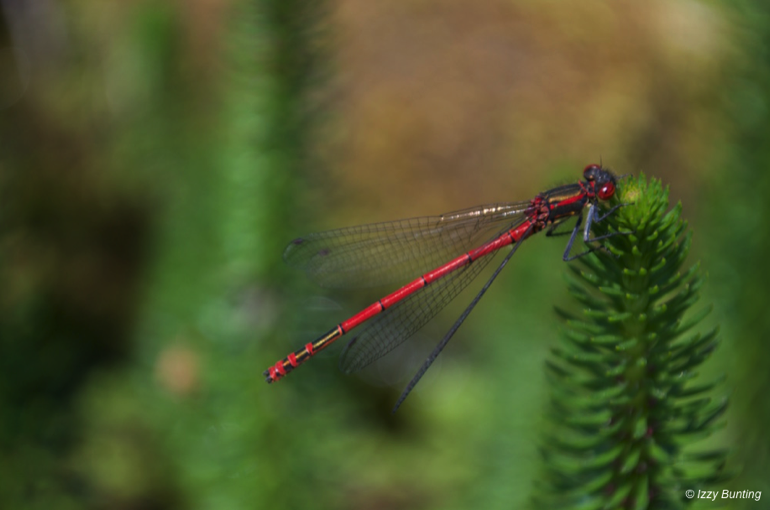
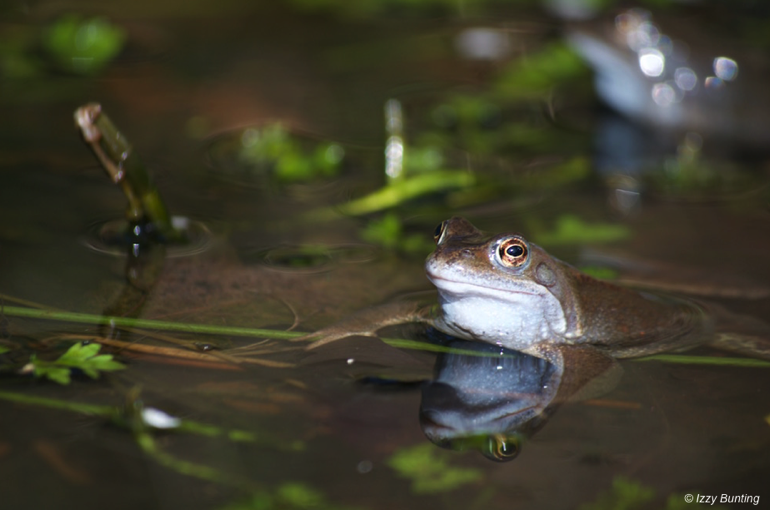
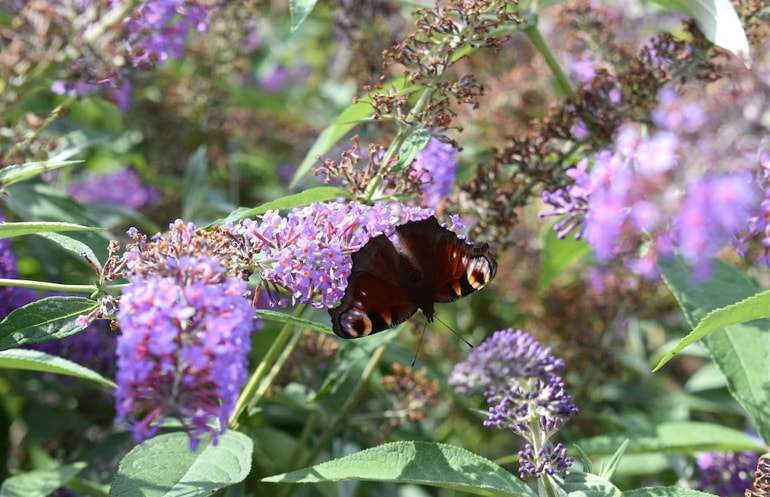
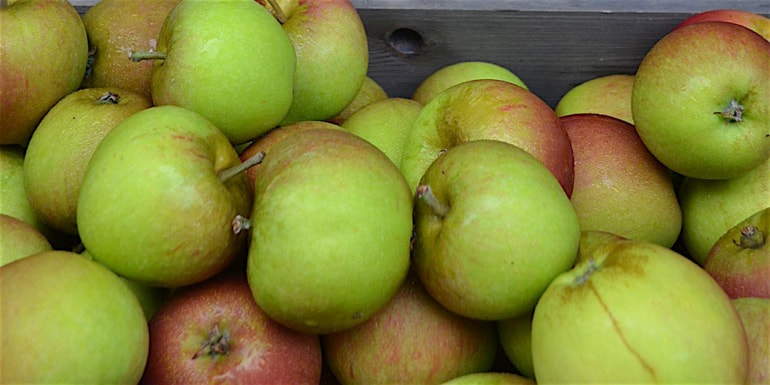
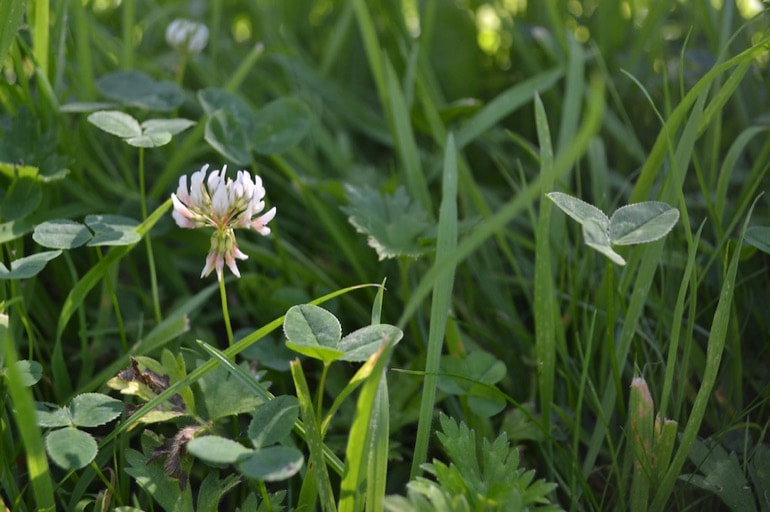
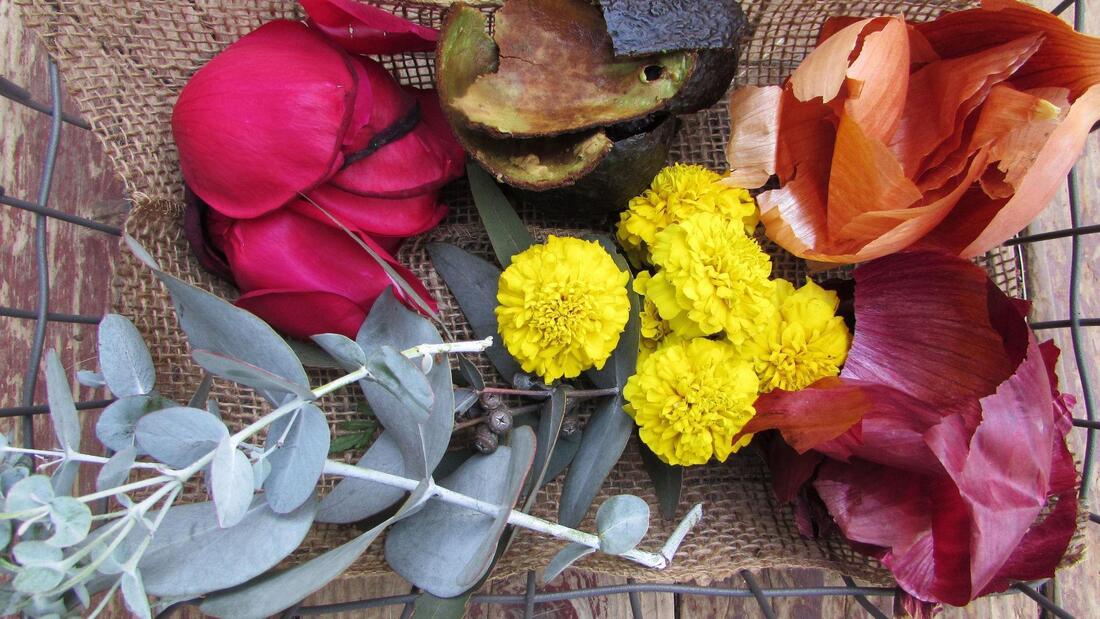
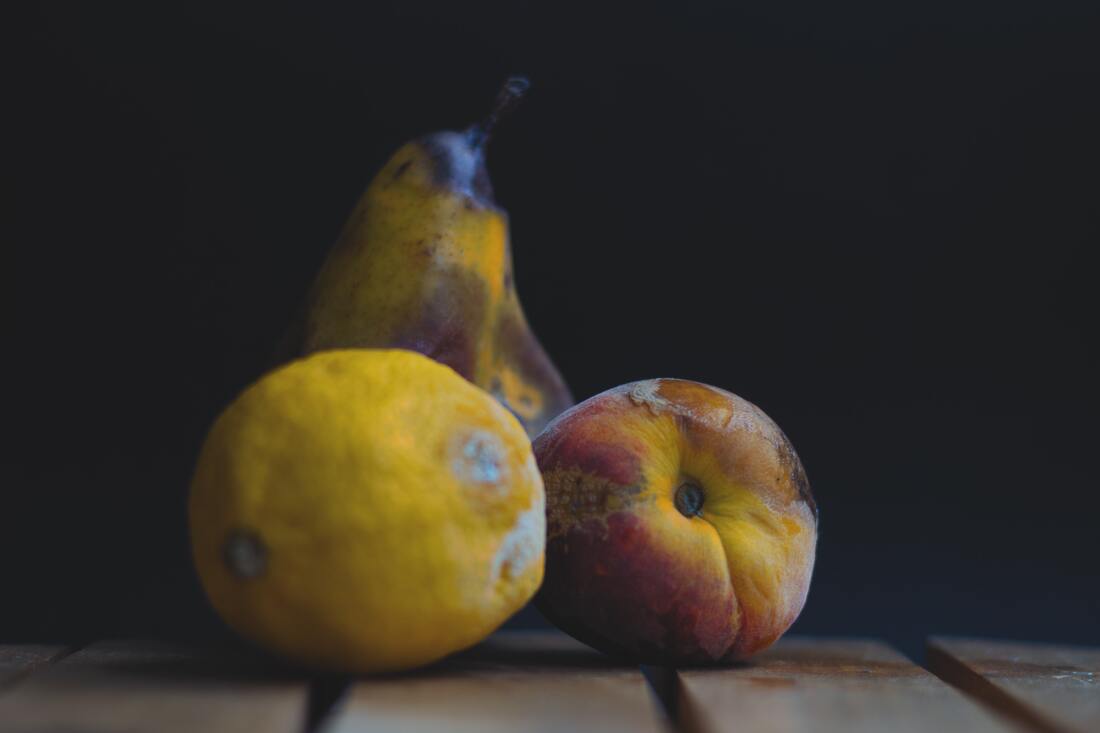
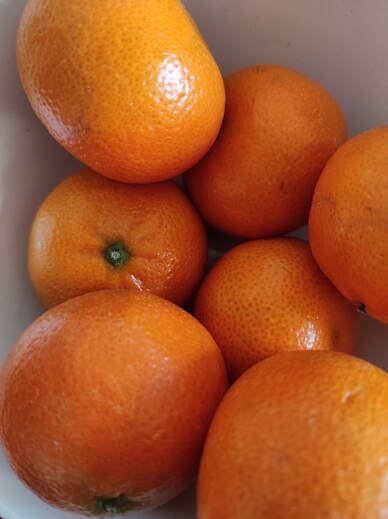
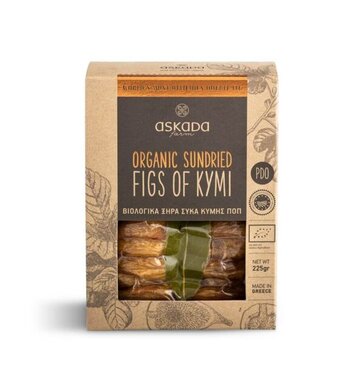
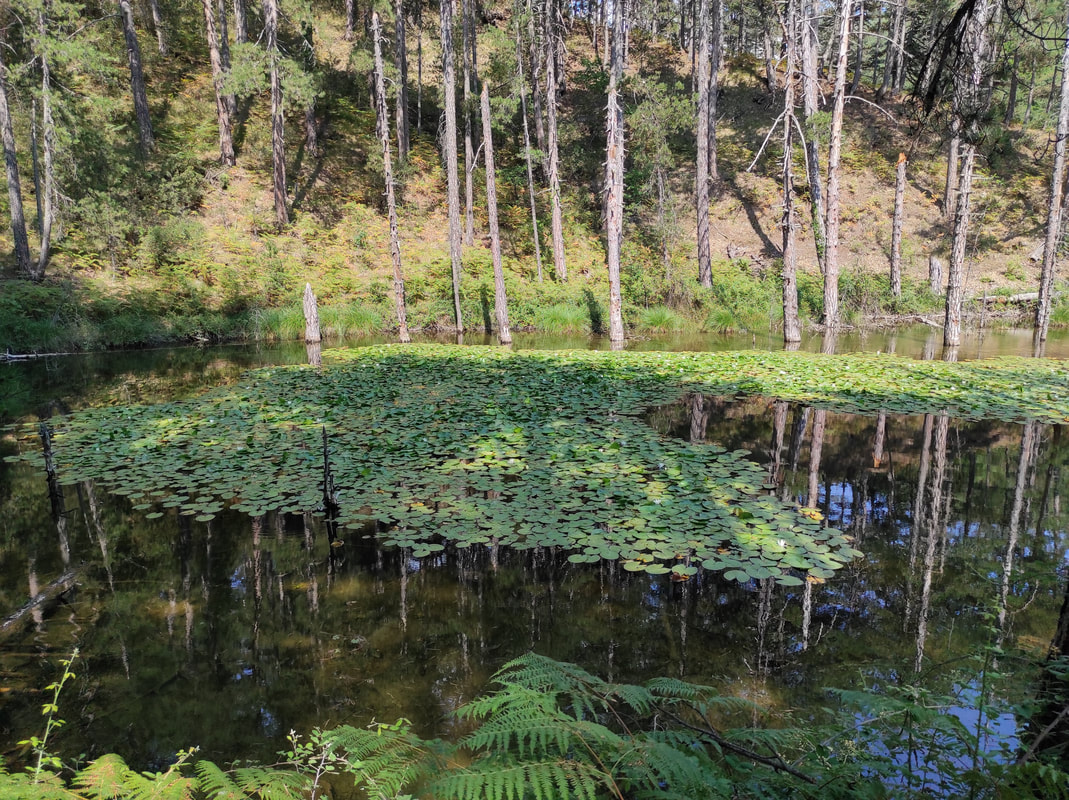
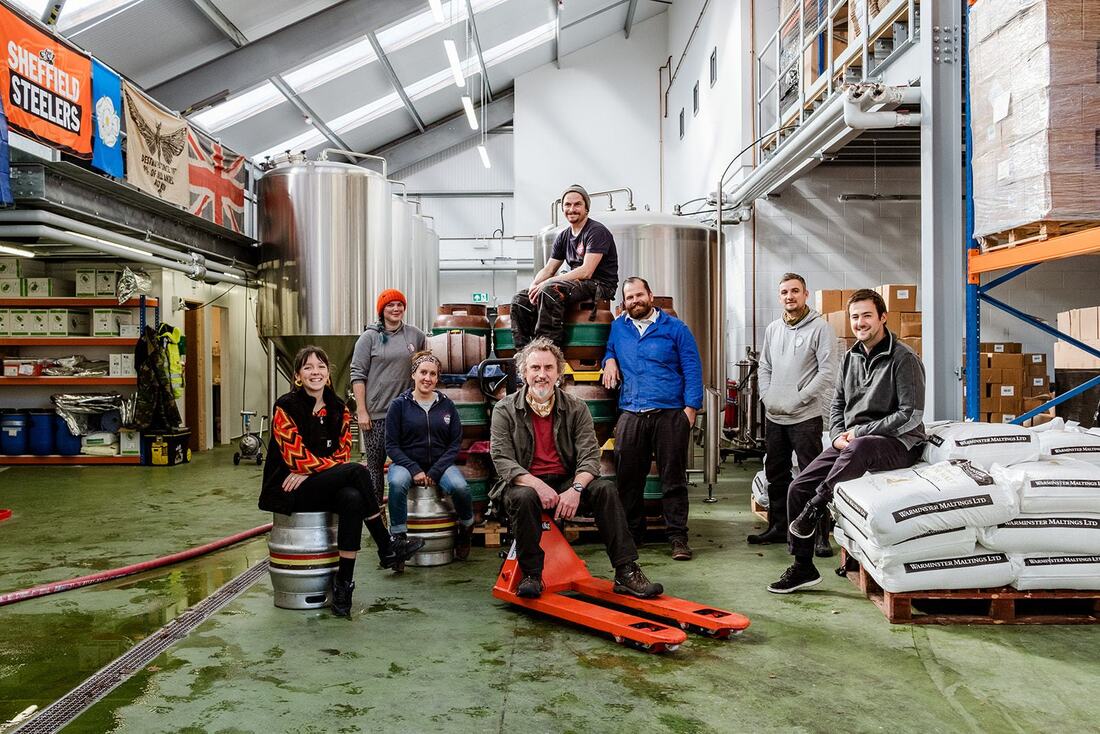
 RSS Feed
RSS Feed
